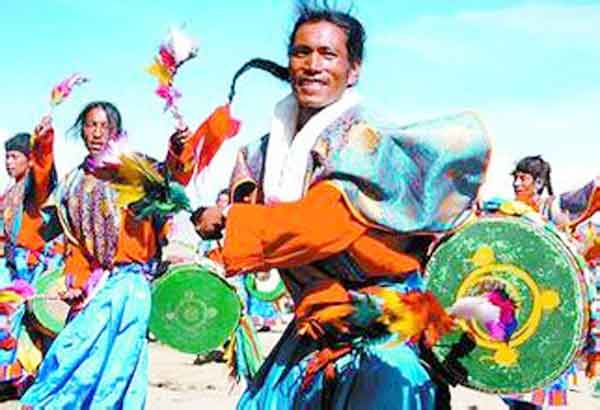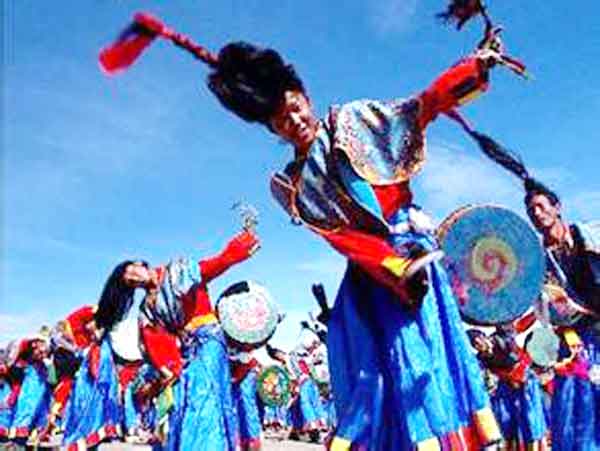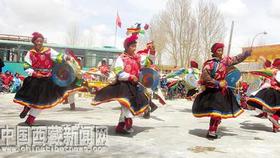Inheritor to introduce oldest Tibetan folk dance to the whole world

A Tibean folk dance - the Zhuo Dance[File photo/Baidu]
In Jiuhe Village of Xiashui Township, Qiongjie County in Lhoka Prefecture, 80-year-old Nyima was practicing a kind of folk dance in Tibetan known as the Zhuo dance while directing the performances of the whole troupe.
Nyima was taught the Zhuo dance by his father and other senior performers when he was young. He has become an inheritor of the autonomous regional-level intangible heritage and formed his own style. Nowadays, there are more than 80 members in the Jiuhe Zhuo dance troupe thanks to the training from Nyima and other senior performers of such art form.
Jiuhe’s Zhuo dance has been passed down since it was formed during the seventh century AD, enjoying more than 1,200 years of history. It is also called the "waist-drum dance". "Zhuo" means auspicious, and the dance rhythms and melodies inspire strong emotions; it is very dynamic and usually performed at the beginning or end of major festivals. The dance is one of the oldest forms of traditional ethnic cultures existing in the world today. In 2014, the Jiuhe Zhuo dance was inscribed in the list of the national intangible cultural heritage.

A Tibean folk dance - the Zhuo Dance[File photo/Baidu]
Nyima has led his Zhuo dance troupe to perform in several events including the CCTV Gala hosted by the Ministry of Culture, the CCTV "I Want to Be on the Spring Festival Show" dance competition, and the Tibet Autonomous Region Tibetan New Year TV Evening Gala. The troupe has also made tour performances to Hong Kong, Taiwan and other destinations.
"The Zhuo dance has changed my life, and now it has nearly become my entire life," Nyima said. "As an inheritor of the Zhuo dance, I’m very pleased that this dance has been recognized as a national intangible heritage and has received support from all levels of governments."
Nyima said that he would pass down all of his own dancing skills to his students. At the same time, he would use traditional festivals, major celebrations and other opportunities to perform the Zhuo dance within and outside Tibet, in order to introduce the traditional Tibetan dance to the rest of the country and the world at large.
Your Comment
Name E-mailRelated News
-
;
-
-

-
Inheritor to introduce oldest Tibetan folk dance to the whole worl
In Jiuhe Village of Xiashui Township, Qiongjie County in Lhoka Prefecture, 80-year-old Nyima was practicing a kind of folk dance in Tibetan known as the Zhuo dance while directing the performances of the whole troupe.
-
-
-

-
Dance drama Hero Gesar staged in Shanghai
A Tibetan dance drama Hero Gesar was staged at Shanghai Oriental Art Center in eastern China's Shanghai, Oct. 24, 2012.
-
-
-

-
Cham Dance performed during ritual in Lhasa
On the fourth day of June according to Tibetan calendar, the day that marks the Shakyamuni turning dharmacakra, a Cham Dance was performed at the Pamu Monastery in Lhasa.
-
-
-

-
Cho dance: a dance that attracts demon
Cho dance is a unique Tibetan religious dance, having a history going back nearly 1,300 years.
-











